How Does Somatic Therapy Heal Trauma?

Trauma is not just a psychological experience; it is a full-body experience. When we undergo a traumatic event, the impact is not confined to our thoughts and emotions, but is also deeply encoded in our physical being. Our bodies remember, even when our conscious minds may not.
This understanding is at the heart of somatic therapy, a branch of psychotherapy that focuses on the interconnection of mind and body in the healing of trauma. Somatic therapists recognize that trauma is stored not just in the brain, but in the very tissues, organs, and systems of the body. As such, working directly with the body is seen as essential for the resolution and integration of traumatic experiences.
The Physiology of Trauma
To understand why somatic therapy is so effective for treating trauma, it’s helpful to first grasp what happens in the body when we undergo a traumatic event. When we perceive a threat, whether real or imagined, our autonomic nervous system kicks into high gear. This is the part of our nervous system responsible for the “fight, flight, or freeze” response.
In fight or flight mode, our heart rate speeds up, our blood pressure increases, and our muscles tense, preparing us to either confront the danger or flee from it. This response is adaptive in true life-or-death situations, but it becomes problematic when the stress is chronic or the threat is no longer present.
In some cases, particularly when fight or flight is not possible, the nervous system may resort to a freeze response. This is a state of shutdown or collapse, where heart rate and breathing slow, muscles go limp, and awareness may narrow or dissociate. Again, this can be life-saving in the moment, but if the freeze state persists, it can lead to a host of physical and psychological symptoms.
The Legacy of Unresolved Trauma
When the traumatic event is over, ideally the nervous system would return to a state of equilibrium, and the intense survival energies mobilized would be discharged and integrated. However, for many trauma survivors, this natural resolution does not occur. The body remains stuck in a state of high alert or shutdown, even when the danger has passed.
This chronic dysregulation of the nervous system can manifest in a wide range of symptoms, such as:
- Hypervigilance and startle response
- Insomnia or nightmares
- Digestive issues and chronic pain
- Emotional volatility or numbness
- Dissociation and memory gaps
- Anxiety, depression, and PTSD
From a somatic perspective, these symptoms are not just side effects of trauma, but are the very language of the body expressing the unresolved traumatic experience. They are the body’s way of saying “I’m not okay” and “I need help to come back into balance.”
Somatic Therapy: An Overview
Somatic therapy is not a single modality, but an umbrella term for a range of approaches that incorporate the body into the therapeutic process. Some common somatic modalities include:
- Somatic Experiencing (SE)
- Sensorimotor Psychotherapy
- Hakomi Method
- Body-Mind Centering
- Focusing
- Authentic Movement
- Dance/Movement Therapy
While each of these approaches has its own unique theory and techniques, they share some key principles:
- The body is a primary source of information and wisdom in the healing process.
- Trauma is stored in the body and must be addressed at a physiological level for full resolution.
- Gently increasing awareness of and tolerance for bodily sensations is key to trauma recovery.
- Titration, or the slow, incremental processing of traumatic material, is essential to avoid overwhelm and re-traumatization.
- Discharge and integration of truncated survival energies is necessary for the restoration of nervous system balance.
In a typical somatic therapy session, the therapist will guide the client to bring mindful attention to their present-moment bodily experience. This may involve noticing sensations, impulses, breath patterns, or micro-movements. The therapist may use verbal cues, gentle touch, or movement exercises to help the client deepen their somatic awareness.
As the client contacts the physical sensations associated with their trauma, the therapist helps them to stay present and grounded, rather than becoming overwhelmed or dissociated. This is where titration comes in – the slow, gradual process of touching into and retreating from the traumatic activation, building capacity and resilience over time.
The therapist also supports the client to complete any self-protective motor responses that may have been thwarted during the original trauma, such as pushing away, running, or fighting back. This allows the survival energies bound up in the body to be released in a safe, controlled way.
Over the course of therapy, as the client learns to befriend and listen to their body’s signals, they often find that their trauma symptoms naturally start to shift and resolve. They may experience greater emotional regulation, improved sleep and digestion, decreased pain and tension, and a renewed sense of safety and vitality in their bodies.
Subsection: Somatic Experiencing (SE)
Somatic Experiencing (SE) is one of the most well-known and researched somatic modalities for trauma healing. Developed by Dr. Peter Levine, SE is based on the idea that trauma symptoms arise when the natural cycle of the stress response is disrupted.
In SE, the therapist helps the client to gently pendulate between small doses of traumatic activation and resourced states of safety and support. This gradual, titrated approach allows the nervous system to discharge excess survival energy and return to a state of balance and coherence.
Some key techniques used in SE include:
- Tracking sensations: The therapist guides the client to notice and describe the physical sensations arising in their body, without judgment or interpretation.
- Resourcing: The client is supported to connect with positive, strengthening experiences in their body, such as a sense of grounding, stability, or ease. These resources help counterbalance the challenging traumatic sensations.
- Titration: The therapist carefully monitors the client’s nervous system activation, helping them to “dose” their exposure to traumatic material in small, manageable increments.
- Pendulation: The client is guided to shift attention between the traumatic activation and the resourced states, promoting the natural oscillation and regulation of the nervous system.
- Discharge: The therapist may encourage the client to engage in spontaneous movements, sounds, or breathing patterns that allow the release of pent-up survival energy.
SE can be a particularly gentle and gradual approach, making it appropriate for clients who may be easily overwhelmed or who have complex trauma histories. The emphasis is on staying within the “window of tolerance” – the zone of nervous system activation that is neither too high (hyperaroused) nor too low (hypoaroused).
Subsection: Sensorimotor Psychotherapy
Sensorimotor Psychotherapy, developed by Dr. Pat Ogden, is another well-established somatic approach for trauma treatment. Like SE, Sensorimotor Psychotherapy works with the cycle of the autonomic nervous system, but places greater emphasis on the role of movement and posture in trauma resolution.
In Sensorimotor Psychotherapy, the therapist tracks the client’s “procedural tendencies” – the habitual, often unconscious patterns of physical organization that develop in response to trauma. These may include chronic muscle tension, collapsed posture, or inhibited movement.
The therapist then guides the client to mindfully explore these tendencies, and to experiment with new, more empowered ways of being in their body. This might involve:
- Completing defensive responses: If the client’s body shows an impulse to push away or set a boundary, the therapist may encourage them to follow through with this movement in a safe, controlled way.
- Reclaiming personal space: The therapist may have the client explore taking up more space with their body, standing tall, or extending their arms, countering the collapse and constriction of trauma.
- Experimenting with posture and movement: The client may be invited to try on different postures or movements, noticing how they impact their sense of agency, strength, and emotional state.
- Mindful touching: The therapist may use gentle, mindful touch to help the client bring awareness to numb or disconnected areas of their body, always with clear consent and boundaries.
Through these body-based explorations, the client starts to rewire their nervous system, releasing old patterns of traumatic response and building new capacities for self-regulation and resilience. The goal is not just symptom reduction, but a fuller, more embodied sense of self.
Subsection: Hakomi Method
The Hakomi Method, created by Ron Kurtz, is a mindfulness-centered somatic approach that incorporates elements of Eastern spiritual practices and modern neuroscience. In Hakomi, the body is seen as a doorway to the unconscious beliefs and memories that shape our experience.
A key principle of Hakomi is “loving presence” – the therapist’s cultivation of a state of open, nonjudgmental awareness and compassion. This creates a safe, trusting container in which the client’s deepest material can emerge and be held.
In a typical Hakomi session, the therapist may:
- Guide the client into a state of mindful self-study, gently drawing their attention to present-moment sensations, emotions, and impulses.
- Use “probes” – small experiments or suggestions – to evoke and illuminate the client’s unconscious material. For example, the therapist might say “imagine pushing away with your hands” and then observe how the client’s system responds.
- Support the client to study their “barriers” – the physical, emotional, and cognitive patterns that block the full expression of their organic, authentic self.
- Offer “missing experiences” – corrective relational experiences that challenge old beliefs and provide new models of being.
Through this process of mindful, somatic self-discovery, the client begins to unwind the core beliefs and traumatic imprints that have limited their potential. They learn to listen to and trust the wisdom of their body, and to align with their true, organic nature.
Bibliography:
Brown, B. (2018). The Power of Vulnerability: Teachings on Authenticity, Connection, and Courage. London: Penguin.
Kurtz, R. (1996). Body-Centered Psychotherapy: The Hakomi Method. Mendocino, CA: LifeRhythm.
Levine, P. A. (1997). Waking the Tiger: Healing Trauma: The Innate Capacity to Transform Overwhelming Experiences. Berkeley, CA: North Atlantic Books.
Ogden, P., Minton, K., & Pain, C. (2006). Trauma and the Body: A Sensorimotor Approach to Psychotherapy. New York: W.W. Norton & Company.
Pelmas, C. P. (2021). A Study of Trauma Treatment and Best Practices Utilizing Sensorimotor Psychotherapy.
Porges, S. W. (2011). The Polyvagal Theory: Neurophysiological Foundations of Emotions, Attachment, Communication, and Self-regulation. New York: W.W. Norton & Company.
Rothschild, B. (2003). The Body Remembers Casebook: Unifying Methods and Models in the Treatment of Trauma and PTSD. New York: W.W. Norton & Company.
Van der Kolk, B. A. (2014). The Body Keeps the Score: Brain, Mind and Body in the Healing of Trauma. New York: Viking.:



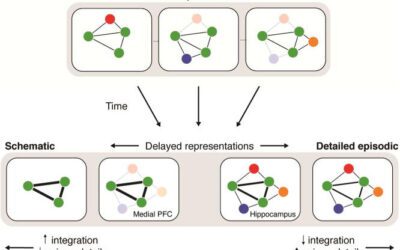

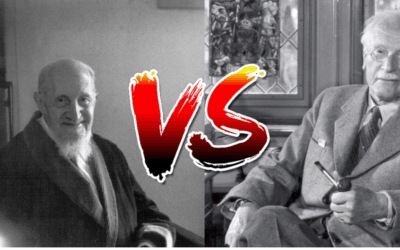






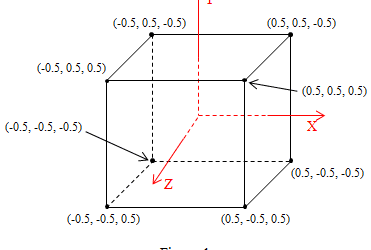


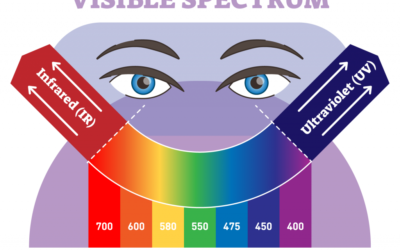




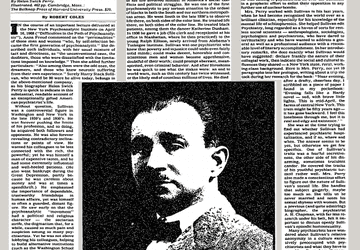





0 Comments